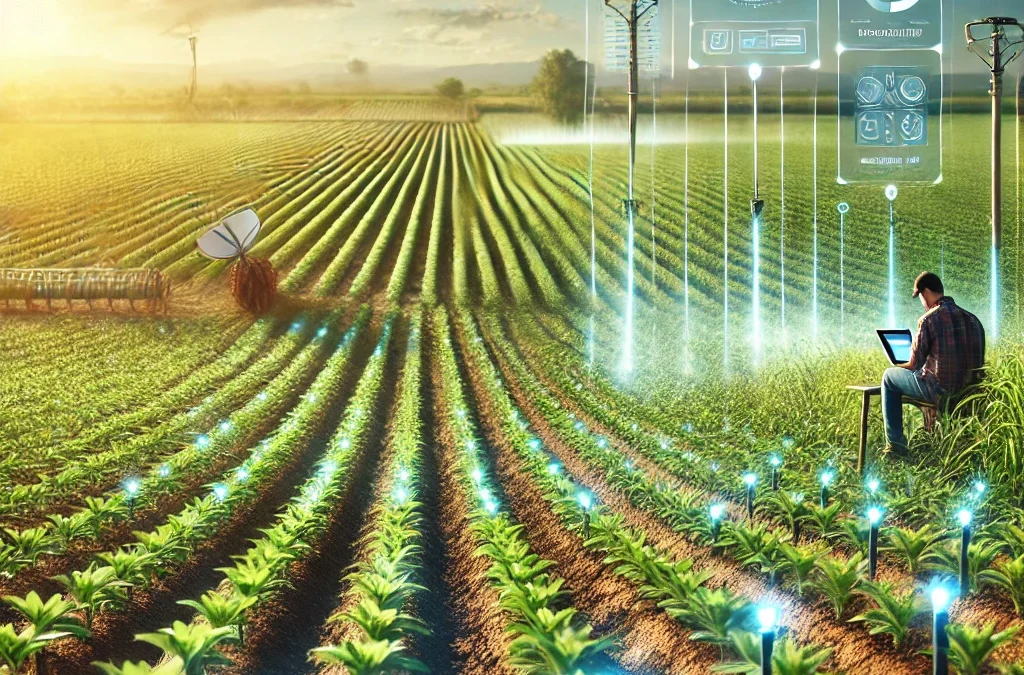The Cost of Wasted Water
Water is the lifeblood of any agricultural operation, but too much of a good thing can have serious consequences. Many farmers struggle with how to prevent overwatering, as it can silently undermine soil integrity, crop vitality, and operational efficiency. While underwatering is an obvious threat to plant health and yield, overwatering can be just as harmful—leading to erosion, nutrient loss, and wasted water costs.
Overwatering and Soil Health: A Slow but Steady Degradation
Soil structure is the foundation of healthy crops, but it is highly sensitive to water imbalances. Overwatering compacts soil over time, especially in clay-heavy fields where water lingers in small pore spaces, displacing essential oxygen. This deprives plant roots of air, leading to anaerobic conditions where beneficial microorganisms struggle to survive, and root diseases thrive. In sandier soils, the opposite occurs—water percolates too quickly, flushing out essential nutrients before plants can absorb them.
One of the most overlooked consequences of overwatering is erosion. When excessive irrigation saturates soil beyond its holding capacity, water begins to run off the surface, rather than infiltrating the root zone. This runoff carries away valuable topsoil, reducing the organic matter and microbial life necessary for long-term soil fertility. Over time, soil erosion decreases productivity, making it harder to sustain yields without significant intervention (Oklahoma State University Extension).
The Fertilizer Problem: When Overwatering Becomes a Financial Drain
Fertilization is a precisely balanced input, meant to deliver nutrients in a form that plants can readily absorb. However, when fields receive excessive water, those nutrients are dissolved and washed away, a process known as nutrient leaching. Nitrogen-based fertilizers, for example, are highly soluble in water. If too much water is applied before a crop can uptake the nutrients, those fertilizers seep below the root zone or get carried away in runoff. Not only does this represent a direct financial loss, but it also contributes to environmental issues, as nitrates from agricultural runoff infiltrate groundwater supplies and local ecosystems (University of Florida IFAS Extension).
Ironically, the very practice meant to promote plant growth—irrigation—can render fertilization ineffective when over-applied. Farmers may notice yellowing plants or stunted growth, symptoms they might mistakenly attribute to inadequate nutrients, when in fact, those nutrients were simply flushed out of reach.
Overwatering and Crop Health: More Isn’t Always Better
It’s easy to assume that water stress only occurs when plants are too dry, but overwatering creates its own set of physiological stresses. When roots sit in saturated conditions for prolonged periods, they begin to suffocate, unable to take in oxygen for respiration. This leads to root rot, a condition caused by anaerobic bacteria and fungal pathogens, which thrive in overly moist environments.
Over-irrigation can also trigger abnormal growth patterns. In fruit and vegetable crops, excessive water uptake can cause cell expansion, leading to fruit cracking (e.g., in tomatoes and melons) or overly large but flavorless produce. In cut flower production, excess water often results in weaker stems and reduced vase life, directly impacting marketability. In grain and cereal crops, too much water near harvest time can encourage sprouting in the head, ruining yield quality.
The Economic Reality: The True Cost of Wasted Water
Beyond its biological and agronomic impacts, overwatering is an economic burden. Many farms operate on thin profit margins, where the cost of pumping water, purchasing fertilizers, and hiring labor to manage irrigation can significantly affect the bottom line. The inefficiencies of excessive irrigation compound over time, leading to unnecessary electricity usage, higher water bills, and increased wear-and-tear on irrigation infrastructure.
Additionally, as droughts become more frequent and severe, and water regulations tighten, growers who continue with outdated, high-water irrigation practices may find themselves struggling to meet compliance requirements—or worse, facing water use restrictions that force them to reduce planted acreage.
Recognizing the Problem Is the First Step—Now What?
By now, it’s clear that excess irrigation is more than just wasted water—it’s wasted money, lost nutrients, and compromised soil health. But how can farmers address these issues without resorting to guesswork?
How AgriLynk Solves the Overwatering Problem
Solving the problem of inefficient irrigation requires more than just intuition—it requires data. AgriLynk’s precision irrigation system gives farmers real-time control over water application, ensuring every drop goes exactly where it’s needed—no more, no less.
🔹 Real-Time Soil Moisture Monitoring
AgriLynk’s advanced sensors track soil moisture at multiple depths, measuring how much water is available in the root zone. Unlike traditional irrigation schedules that assume uniform drying across an entire field, our system measures actual water availability, allowing for precise irrigation decisions.
🔹 Preventing Overwatering Through Smart Automation
By combining soil moisture data with automatic valve controls, AgriLynk adjusts irrigation in real time. The system starts irrigation only when the soil is dry enough to need it, and stops once optimal moisture levels are reached—eliminating the risk of overwatering.
🔹 Protecting Fertilizers From Leaching
With controlled irrigation, nutrients stay in the root zone, reducing the need for excess fertilization. This means fewer inputs wasted and higher nutrient efficiency, translating to healthier plants and lower costs.
🔹 Tracking Water Usage to Reduce Costs
AgriLynk’s system provides detailed water usage reports, allowing farmers to track where every gallon is going. This leads to better budgeting, lower utility bills, and compliance with water regulations.
Final Thoughts: The Future of Sustainable Irrigation
In an era where water conservation is more critical than ever, optimizing irrigation is not just about cutting costs—it’s about ensuring long-term farm sustainability. The traditional method of “watering on a schedule” is being replaced by precision, data-driven irrigation that eliminates waste while maintaining yield and crop health.
For farms looking to reduce water waste, cut fertilizer costs, and maximize efficiency, AgriLynk offers a proven, real-time solution.
Ready to take control of your irrigation? Contact us today or call one of our friendly, Southern California-based AgriLynk staff at 760-723-1529.








